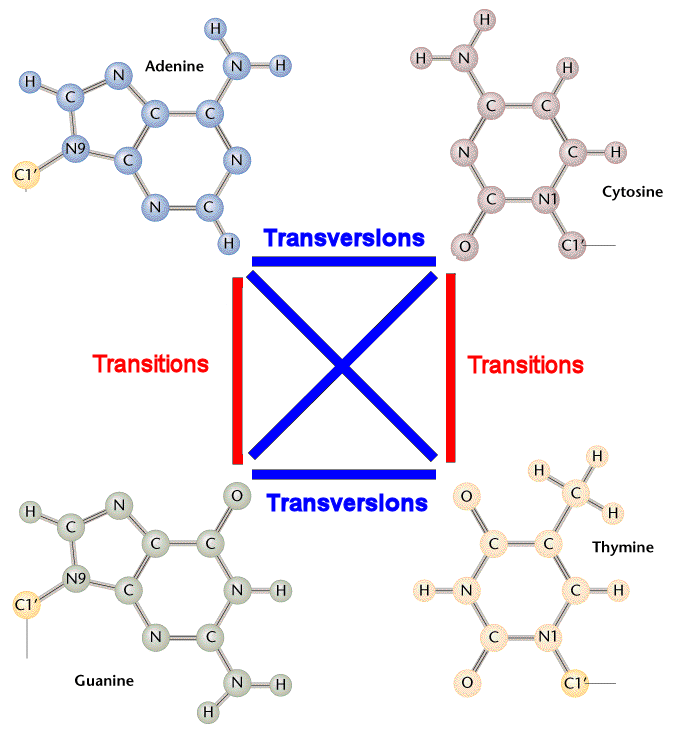Occasionally evolutionary biology tries to inform chemical theories, but given the shaky foundation of certain evolutionary claims, maybe this isn’t a good idea.
Years ago, in a debate, an evolutionist said something to the effect, “Sal you’re clueless, transition mutations happen 10 times more frequently than transversion mutations.” I’m sorry now I took that evolutionist’s word about basic chemical processes. It turns out he was wrong, and I was duped into believing an evolutionary claim.
Here are the 4 bases that are the alphabet of the DNA and how they can mutate from one letter to the other.

From wiki:
In genetics, a transition is a point mutation that changes a purine nucleotide to another purine (A ↔ G) or a pyrimidine nucleotide to another pyrimidine (C ↔ T).
and
In molecular biology, transversion refers to the substitution of a purine for a pyrimidine or vice versa.
One thing I’ve learned, take with skepticism the mutation rates that are inferred from evolutionary theory. Especially given the usual shelf life of an evolutionary idea. The “discovery” of transition bias didn’t last long before it got challenged.
Transition Tranversion bias is not Universal
Comparisons of the DNA sequences of metazoa show an excess of transitional over transversional substitutions. Part of this bias is due to the relatively high rate of mutation of methylated cytosines to thymine. Postmutation processes also introduce a bias, particularly selection for codon-usage bias in coding regions. It is generally assumed, however, that there is a universal bias in favour of transitions over transversions, possibly as a result of the underlying chemistry of mutation. Surprisingly, this underlying trend has been evaluated only in two types of metazoan, namely Drosophila and the Mammalia. Here, we investigate a third group, and find no such bias. We characterize the point substitution spectrum in Podisma pedestris, a grasshopper species with a very large genome. The accumulation of mutations was surveyed in two pseudogene families, nuclear mitochondrial and ribosomal DNA sequences. The cytosine-guanine (CpG) dinucleotides exhibit the high transition frequencies expected of methylated sites. The transition rate at other cytosine residues is significantly lower. After accounting for this methylation effect, there is no significant difference between transition and transversion rates. These results contrast with reports from other taxa and lead us to reject the hypothesis of a universal transition/transversion bias. Instead we suggest fundamental interspecific differences in point substitution processes.
What does this all mean. Take with a grain of salt evolutionary claims, especially when they are used to estimate the rates of chemical reactions. Learn you chemistry from chemists, not evolutionary phylogeneticists.
NOTES
1. I posted this because I’ll need to refer to it again, plus I didn’t want to lose track of the paper in question.
2. Photo Credits Memorial University